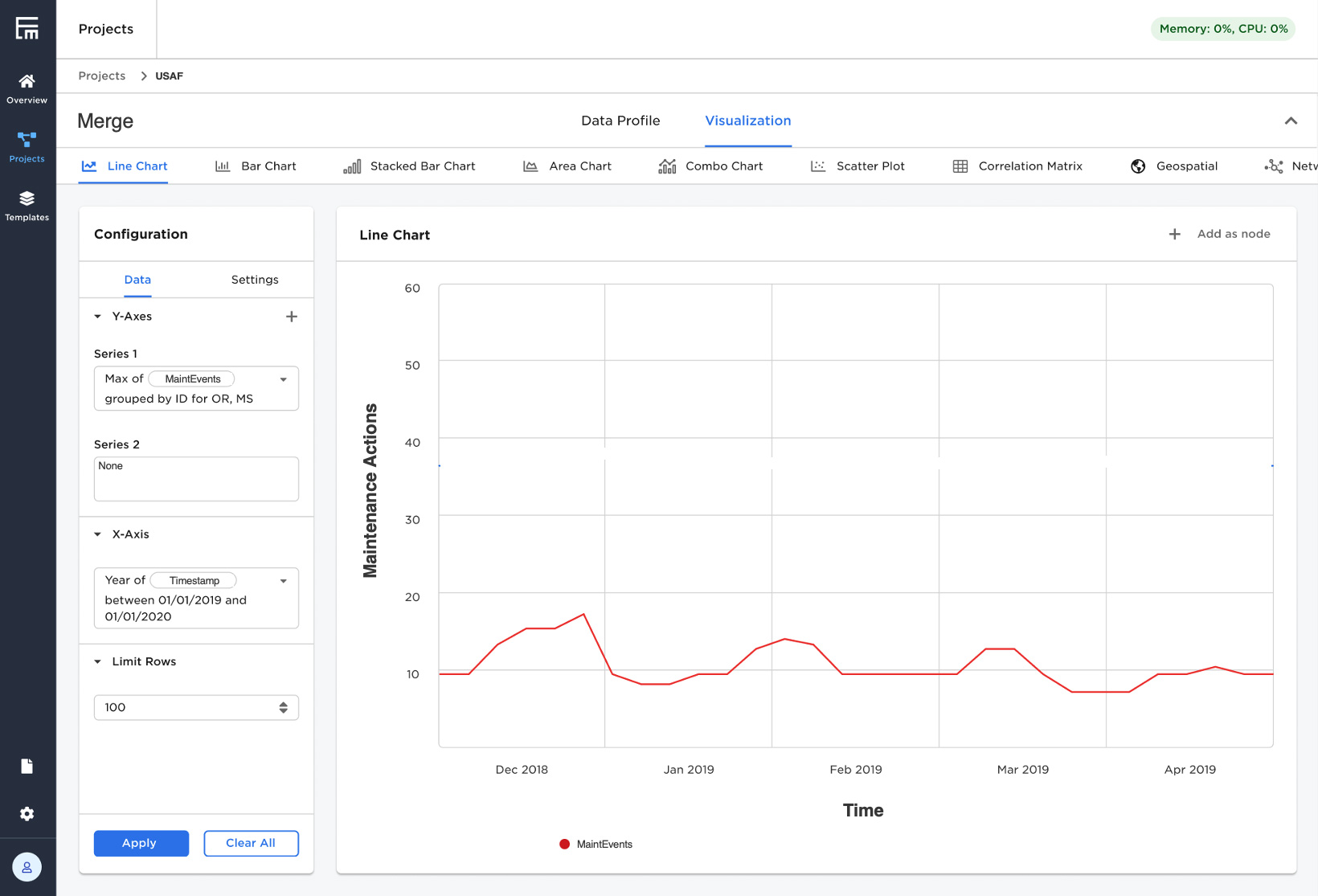Identifying Parts that Drive Maintenance Downtime
Challenge
Maintenance Analysts at the U.S. Air Force deliver operational insights to flight-line crews responsible for ensuring fleet readiness and mission capability. Analysts typically spend 90% of their day identifying, extracting, and manipulating information from disparate data sources, and 10% on actual analysis – antiquated database interfaces and over-reliance on conventional spreadsheets constrain analysts from providing actionable recommendations in a timely manner.
Recently, as part of the deployment of C3 AI Readiness for Aircraft, a forward-deployed squadron demonstrated that C3 AI Ex Machina, leveraging quick data exploration tools and full access to operational data, could accelerate the analytic throughput to the field by as much as 10-20X.
Sample analyses that now require hours (vs. days) included evaluating the impact of flight duration on aircraft down-time, isolating aircraft locations that would benefit from sealing, and reconstructing the maintenance history of a “bad actor” part involved in a flight incident.
Bad actors, or parts with higher than normal failure rates, disproportionately affect mission capability rates and are a source of inefficiency to the global sustainment network. The deployed analysis team led the initiative to proactively identify and track down all potential bad actors across the fleet.
Approach
Within hours, the team collaborated to deploy a C3 AI Ex Machina workflow – depicted below – that assesses the maintenance history for each unique part serial number.

The workflow evaluates all historical records and fetches the maintenance actions for each unique part. Maintenance records are then cleaned, filtered, and merged into a single potential “bad actor” list capable of depicting each maintenance action as a timeseries over time and highlighting the last known aircraft tail where the identified parts were installed or removed from – allowing maintenance wings to implement mitigating actions.

USAF maintenance analysts now have the ability to, within hours, implement C3 AI Ex Machina workflows that enable them to rapidly provide analytic support to flight-line maintainers and do so in a highly scalable and collaborative manner.
Results
- Connected to enterprise datastores containing over 42 million maintenance records
- Rapidly deployed data exploration workflow to evaluate potential bad actor parts
- Reconstructed the maintenance actions for each potential bad actor in a timeseries for in-depth assessment of each unique part
- Deployed “bad actor” tracking functionality – a previously unavailable capability
- Shortened analytic development cycle by 10-20X



